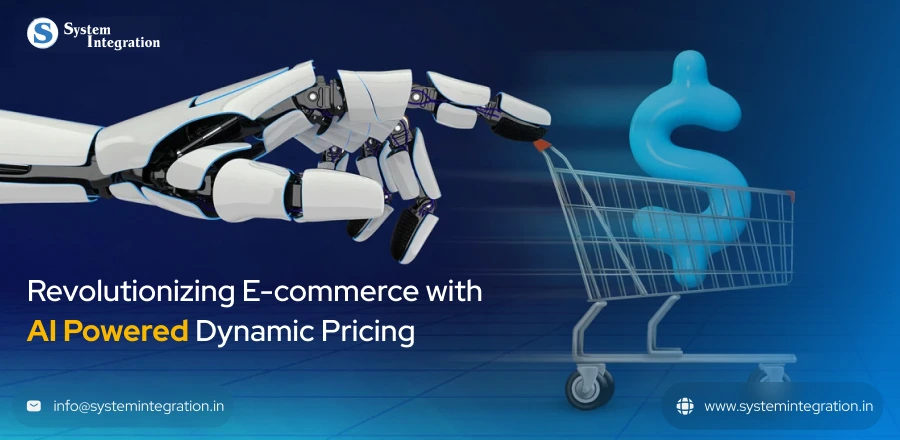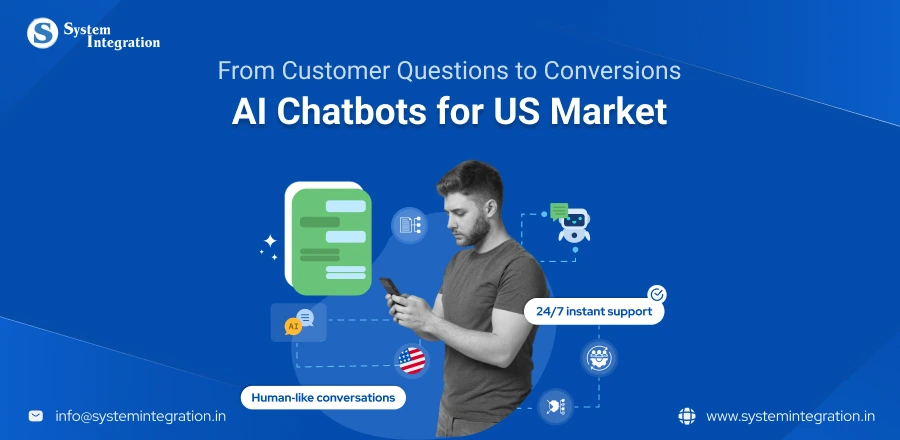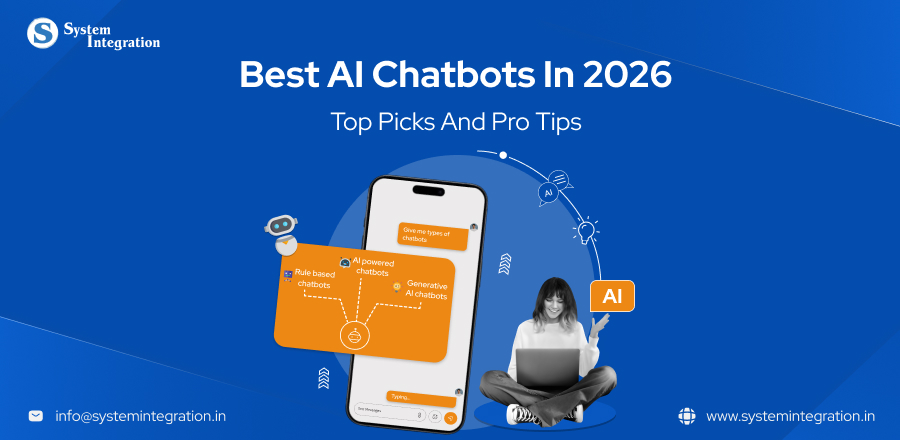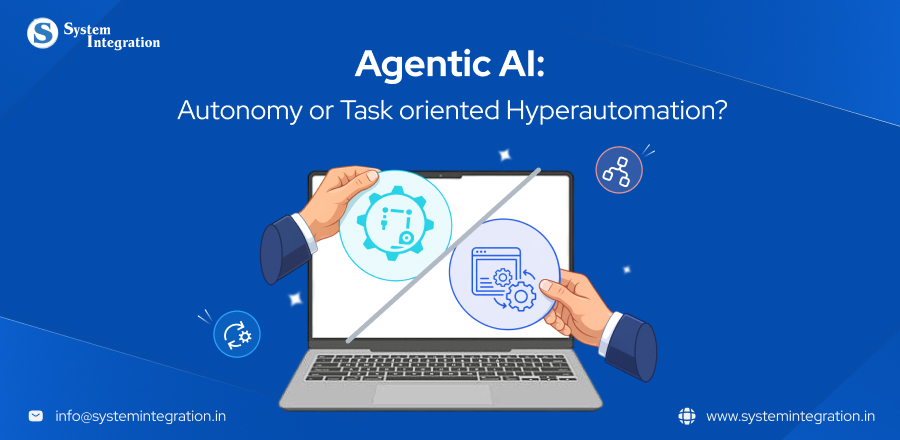Introduction
In the current age of the internet where customers aren’t just trusting whatever you sell online and buy it. They like to compare the prices online before finalizing any product they like.
In fact, many studies have shown that around 52% of online shoppers like to compare prices with a range of options. This is because, with all the information available online within just a few clicks, it’s very effortless to compare prices and find cheaper options.
This makes it a bit tough for the business to stay competitive when there are multiple other firms providing competitive prices. Therefore, this is where the AI driven pricing agents play the key role. Therefore, it is best for the businesses to find the best way to stay agile in the market by setting product prices.
What Is Dynamic Pricing
Dynamic pricing is the strategy where businesses take help of AI agents modify their prices in real time for their services or products they sell online based on the supply, demand and other vital aspects like competitors pricing and user behavior.
How Does It Work?
- Prices are not fixed and can be changed at any required time based on market conditions.
- Prices rise when there is shortage of supply and the demand rises.
- Considering the competitors pricing, the firm can adjust its online sales pricing.
- Prices can also be changed based on the customer’s buying behavior and time and day.
- Companies drop prices for the products that are high inventory or close to expiration to boost the sale.
What Makes AI Pricing Dynamic?

AI uses machine learning to adjust dynamic pricing in real time based on the various factors like market conditions, analysing competitors and many others without human intervention. Thus, leading to less errors and mistakes.
Key Aspects That Makes AI Pricing Dynamic
1. Demand and supply in the market: AI systems are able to anticipate and respond to changes in demand. To balance supply and demand, a ride sharing service might, for instance, increase prices in high traffic areas during peak hours.
2. Customer behaviour: AI determines prices that are most likely to result in a sale and profit by analysing how customers interact with a product or service, including their willingness to pay.
3. Competitor pricing: Software can keep an eye on rivals’ prices in real time and modify the company’s own to stay competitive, guaranteeing that the best deal is available right now.
4. Inventory levels: AI is able to dynamically alter prices using inventory data. A low-stock item may see a price increase, while an overstocked product may see a price reduction to boost sales.
Type of AI dynamic pricing strategies
Dynamic Pricing
It changes prices depending upon the demand, hikes up when there is high demand and vice versa. One example: the use of surge pricing by ride-sharing services.
Time Based Pricing
Adjusts pricing depending on time of day, day of the week or time of year. Handier are forms of price discrimination that the higher paying customer might not resent, such as a charge for an evening at the movies or room rates in fancy hotels during tourist season.
Competitive pricing
This is when you track the price setting of competitors and it causes automatic changes in your own prices, typically matching or undercutting their price.
User Behaviour Based Pricing
Adjusts prices for customer segments (groups of similar kinds of customers determined based on behaviour, geography or past purchases). For instance, an airline may sell economy and business class tickets at different prices.
Implement AI Dynamic Pricing In 4 Simple Steps
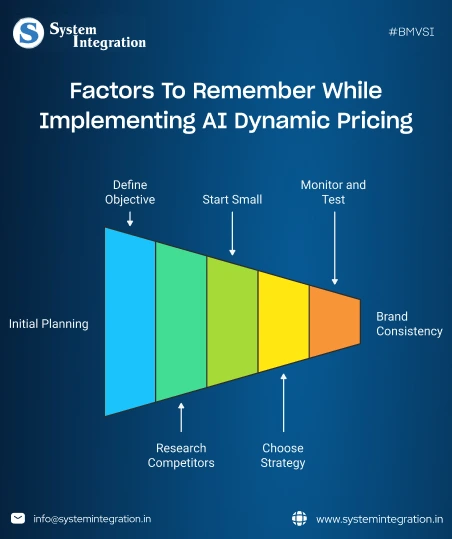
Analyze Market & Customer Data
Start with learnings from customer behavior, purchase volume, competitor pricing and seasonality. This is the data that feeds your pricing model and gives you an idea of when and why prices will change.
Establish Clear Pricing Rules and Strategies
Once you have the data, create pricing rules around triggers such as demand, stock availability, time of day or customer segments. Choose which tactics are right for your business like surge pricing, tiered pricing, customer specific discounts or competitor match fares.
Automate Price Adjustments
Use dynamic pricing or AI tool sets to automatically update rates according to rules you have in place. This limits manual work and guarantees timely pricing changes in all channels. Automation allows you to react on the fly to changes in market, competitors, and customer demand.
Monitor, Test & Continuously Optimize
Monitor how prices are performing with conversion rate, revenue and profit margin metrics. Test various tactics to find out what works best with your customers. Keep evolving your rules and models with new insights, market trends, or seasonal changes to have the maximum impact.
Realworld Use Cases
1. Amazon
Applies AI powered dynamic pricing to offer temporary discounts and even gives permanent pricing points. In both the cases their strategies work well on most of the products and help in retaining customers.
2. Uber
Surge pricing to meet demand and get enough drivers on the road during peak hours or special events. By analyzing the factors like ride demands, the availability of drivers, whether, local events and much more.
3. Walmart
Uses dynamic pricing techniques to match local and online retailer prices in real time based on factors such as stock, price of competitors, and market trends. It even compares the prices of various products online in real time and changes the cost of any particular product if needed.
4. Nykaa
It changes its prices based on demand and also Nykaa’s AI dynamic pricing strategies are different to its high spending loyal users and to new customers. This helps in retaining loyal customers and also gaining new ones.
5. Myntra
Its AI manages the price of the high value products and knows that customers tend to remember the prices of key value products. It continuously monitors the market and its various competitive pricing and keeps modifying its price of various products accordingly.
Challenges and Consideration for AI Dynamic Pricing
Data Quality & Availability
Without the right historical data on hand, if a company fails to capture inventory updates, competitor prices or market trends all correctly in the pricing engine it becomes unstable.
Solution
The solution is to set up an automated workflow for data validation, cleansing pipelines and real time integrations for your Data Products. Companies need to follow strong data governance principles.
Customer Perception & Trust
Customers may feel that dynamic prices are unfair when they differ widely across different sites or from your competitors and time periods. These experiences can result in lack of confidence, allegations of price fixing or loss of brand.
Solution
In this type of case firms can do one thing, it can develop pricing strategies that are transparent, consistent, and easily explainable.
System Complexity & Integration
AI must integrate seamlessly with many different systems such as: CRM’s, Inventory Software and e-commerce channels in order to monitor all charges on a periodic basis. These integrations can be quite complex, particularly if dealing with legacy systems or a patchwork data architecture.
Solution
The solution is creating a modular, scalable architecture with APIs and microservices that integrate multiple systems seamlessly. Data flow is much easier and friction will also decrease when you solve these using middleware, integration platforms or today’s cloud based connectivity solutions.
Continuous Monitoring & Model Maintenance
The performance of AI models decays with changing market conditions, the shift of customer behaviors and emergence of new economic trends. The pricing model can become inaccurate if not continuously monitored, and this could result in revenue loss or opposition from customers.
Solution
Keeping up the performance requires retraining pricing models constantly with new data, monitoring them on dashboards and validating them with testing. Automated alerts, performance audits, and regular model reviews all work to ensure that it performs well.
Wrapping up
With the increasing market of AI dynamic pricing in E commerce, it is safe to say that it will be one of the major aspects that will change the scenario of online shopping. This is because, with all the information available online within just a few clicks, it’s very effortless to compare prices and find cheaper options.
So if you want to boost your online sales, contact BMV System Integration, the best AI software development company. We’ll discuss a suitable strategy tailored to your business.
FAQs
It’s a strategy that uses AI to automatically adjust products prices based on market demands in real time, competitor pricing, inventory levels, and customer behaviour.
Traditional pricing involves setting prices manually, which can slow down the process and it’s also less responsive. Whereas, AI dynamic pricing is a real time, automated, and data driven process that reacts instantly to changes in the market.
Yes, absolutely. With the right tools and strategies, even small and growing businesses AI dynamic pricing to enhance their sales, stay competitive, and to make the most of every opportunity.
The main aim of dynamic pricing is to increase sales and profitability by adjusting prices in real time based on factors like demand, competition, and inventory.


